Integrated Electronics
DAQ and Control Systems
Since the MERLIN computer was built in the 1950s to collect and analyze data in high-energy physics experiments, the Instrumentation Department has been advancing the technology of data acquisition (DAQ) and experiment control for major scientific research programs at Brookhaven and throughout the world. As detector systems have grown in speed, density, and complexity, our DAQ and control systems have taken advantage of powerful industry developments in microelectronic components, standards, and protocols, depending heavily on the use of state-of-the-art nanometer-scale field-programmable gate arrays (FPGAs).
Our Capabilities
- Development of custom printed circuit boards (PCBs) to fulfill required experiment and detector functionality, including PCBs designed for high-speed communication, high-voltage management, and data collection from components such as application-specific integrated circuits (ASICs), FPGAs, and other commercial ICs
- Design and development of high-speed data acquisition and control systems for nuclear physics, high-energy physics, and cosmological survey applications
- Delivery of designs satisfying challenging operational conditions, such as cryogenic temperatures and low radioactivity or radiation hardness levels
- Implementation of FPGA intellectual property cores and digital signal processing schemes for real-time detector feedback and triggering
- Application of industry-standard interfaces, including PCIe 4.0, USB 3, ethernet (1 Gb/s, 10 Gb/s, and 100 Gb/s), JESD204B, and SATA
- Development of systems using FPGA system-on-a-chip (SoC) solutions from Intel and Xilinx
- Implementation of multi-gigasample radio-frequency data converters (RFSoC) for use in radio astronomy applications, including custom, real-time, high-speed digital signal processing on FPGAs and readout and control software
- Development of data collection systems capable of receiving and storing data at hundreds of GB/s
- Synchronization of large systems down to picosecond resolution
- Distribution of power for large-scale electronic systems via low-noise design schemes
- Configuration, characterization, and optimization of commercial-off-the-shelf electronics and ASICs in a variety of extreme environments (e.g., cryogenic)
- Development of high-speed readout methods, including 100 Gbit/s ethernet and custom 6.6 Gbit/s link 8b/10b protocols
- Development of custom PCIe readout cards from soup to nuts: PCB design and layout, FPGA firmware, Linux kernel drivers, and user interface software
- Development of user-facing readout, diagnostic graphical user interfaces (GUIs), and control software for experiment systems
- Design of hardware and software for production testing of electronic components required by experiments and detectors
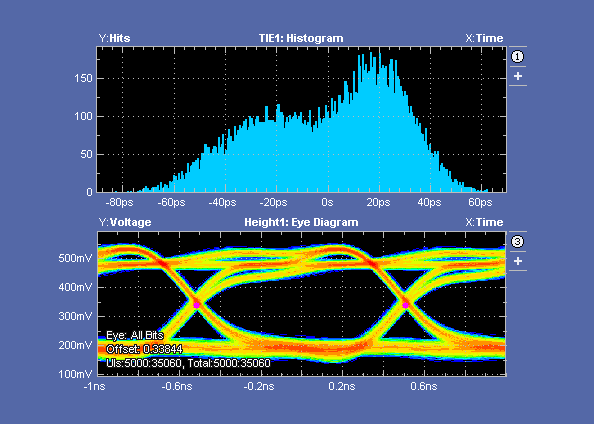
Eye diagrams and time-domain reflectometry tests characterizing our cables and interconnect methods. We ensure that our solutions fit the specifications required by application-specific integrated circuits (ASICs) and FPGA communication while testing and documenting the radioactivity of all components.
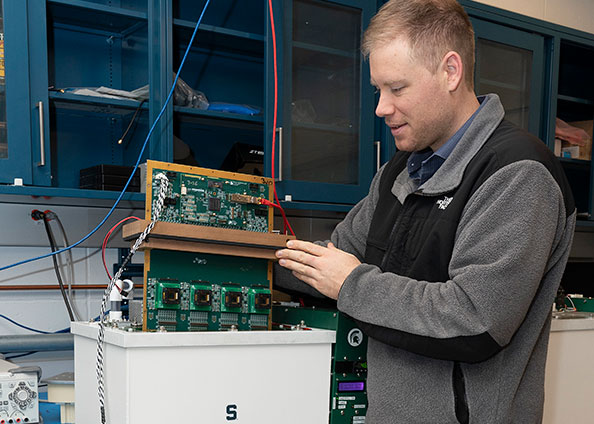
A liquid nitrogen–based testing system for quality control of ASICs developed in-house. With room temperature and cryogenic screening for all critical components, the electronic yield of assembled front-end motherboards was 100 percent.
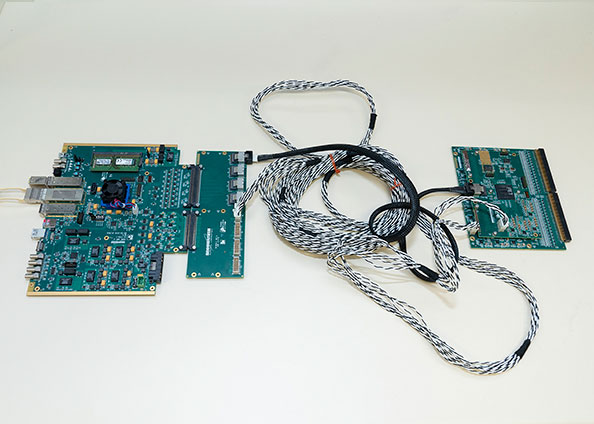
Warm interface board and front-end motherboard used in protoDUNE. This motherboard was designed to operate in liquid argon, with an FPGA controlling communications with the ASICs.
Case Studies
Particle Detector Electronics
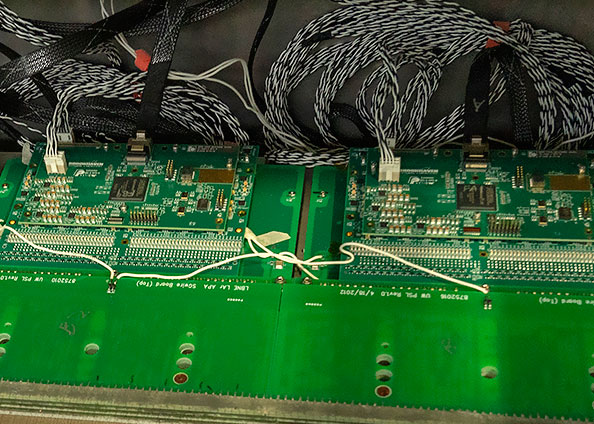
A 40-percent size replica of a protoDUNE wire anode plane array allowed our electronics to be fully tested while connected to wire sensors. System-level techniques for grounding, isolation, and noise were developed on site and enabled a smooth installation and commissioning in the real detector.
In collaboration with in-house ASIC designers, we developed the full electronics chain for reading out the wire arrays of more than 10,000 channels for the prototype Deep Underground Neutrino Experiment (protoDUNE) detector and Short-Baseline Near Detector (SBND). During commissioning of these particle detectors, our custom cryogenic FPGA firmware, GUI, and command-line interfaces quickly diagnosed sources of noise from power supplies and system components. We also demonstrated the viability of an integrated cryogenic electronics concept, allowing the detectors to be read out with extreme accuracy. The data resulting from DUNE and SBND will help scientists understand the role of neutrinos in our universe.
Low-radioactivity DAQ electronics
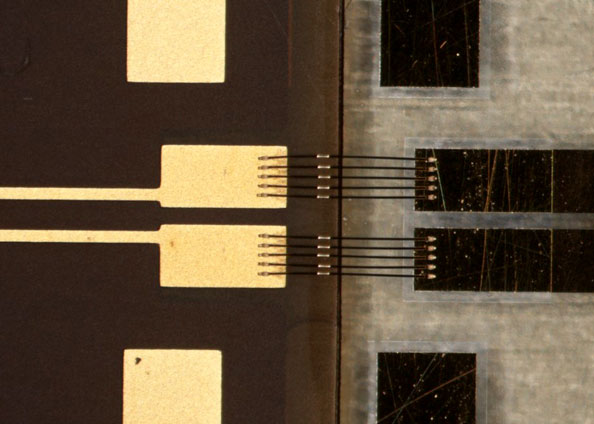
Custom kapton cables.
Cutting-edge detectors on the frontiers of neutrino and dark matter research require high-performance low-radioactivity electronic components. While the radioactivity of typical electronic components is negligible in everyday cases, it’s enough to overwhelm such high-resolution detectors. We are leading the integrated electronic design of nEXO, an upcoming neutrinoless double beta decay experiment. Cryogenic ASICs will need to communicate outside of the detector at link speeds up to 1 GHz. Unable to use typical electronic substrates, connectors, or cables, we are iteratively prototyping, characterizing, and radioassaying custom solutions.




